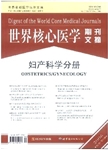磁共振为基础的系列骨盆测量:孕期母体骨盆尺寸有变化吗?
Magnetic resonance-based serial pelvimetry:Do maternal pelvic dimensions change during pregnancy?作者机构:Departments of Obstetrics and GynecologyDr.
出 版 物:《世界核心医学期刊文摘(妇产科学分册)》 (Core Journal in Obstetrics/Gynecology)
年 卷 期:2006年第2卷第11期
页 面:8-9页
学科分类:0831[工学-生物医学工程(可授工学、理学、医学学位)] 100207[医学-影像医学与核医学] 1002[医学-临床医学] 08[工学] 1010[医学-医学技术(可授医学、理学学位)] 10[医学]
主 题:骨盆测量 胎儿超声检查 骨盆径线 阴道分娩 妊娠晚期 比较性 研究设计 统计学分析
摘 要:Objective: The purpose of the study was to evaluate the stability of the maternal pelvis over the course of the third trimester and the puerperium. Study design: Pregnant patients were recruited to undergo comparative magnetic resonance-based pelvimetry and fetal ultrasonography at 37 to 38 weeks of gestation. Most of the patients were recruited from a study of women who planned a trial of labor after a previous cesarean delivery for cephalopelvic disproportion. These results have been reported previously. Patients then underwent magnetic resonance-based pelvimetry within 3 days and at 3 months after delivery. Postdelivery analysis was used to answer the question: Do pelvic dimensions change after delivery? Results: Eighteen patients completed the study. Eleven of the patients underwent cesarean deliveries, of which 4 deliveries were before labor. Seven patients had successful vaginal births after their previous cesarean delivery. Statistical analysis of the 18 patients determined that pelvic measurements did not demonstrate change over the course the study. Conclusion: Serial magnetic resonance-based pelvimetry showed relative stability of pelvic measurements through the course of pregnancy and delivery. If comparative pelvimetry is to be useful as an antepartum predictor of labor success, then it may be possible to obtain reliable pelvimetry in those patients anytime after delivery.



